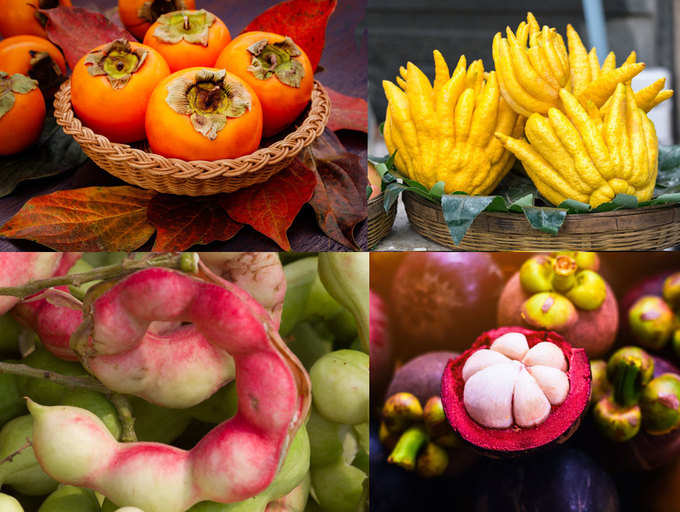
In India, locals eat the majority of rare fruits that are harvested from the wild. Exotic fruits can be found all over the world, which many of us are aware of. But do you know that India is home to a large number of uncommon fruit varieties. They are either limited because of area restriction and mass production. In both situations, they become uncommon and occasionally escape people’s focus and attention. Here are some uncommon Indian fruits that you should be aware of.
Jungli Jalebi/Kodukkapuli (Camachile)
Jungli jalebi (or kodukkapuli) has spiraling green-pink pods with 6-10 glittering black seeds encased in a rich delicious edible pulp. While the acidic seeds are used in curries, the pulp can be consumed raw or turned into a beverage resembling lemonade. The plant is known as jungli jalebi because of the fruit’s likeness to the Indian delicacy jalebi.
Buddha’s Hand (Fingered Citron)
Buddha’s hand is a magnificent fruit that resembles a bumpy lemon with long, golden tentacles that extend from the base and resemble gnarled human fingers. The gentle yet zingy flavor of Buddha’s hand is delightfully fragrant, and it is known to fill spaces with the scent of fresh flowers. Botanists are confused about whether the fruit is indigenous to China or India in the lower Himalayas, where it is said to have originated.
Langsah/Lotka (Langsat)
Langsah is a tiny, transparent fruit with an orb form that is most frequently seen in South India. When unripe, they can be extremely sour, but when ripe, they are delightfully sweet and have a bittersweet grapefruit-like flavor. Even though demand for this fruit spikes throughout its season, it is only grown in a small number of southern locations.
Mangustaan (Mangosteen)
Mangustaan is a fragrant tropical fruit with a fleshy inside that is wet, snow-white, and delicious, and is roughly the size of a small orange. Although it is the national fruit of Thailand, it is said that during the 18th century, the trees of this fruit were quite common in southern India. Mangustaan tastes mellow and earthy, akin to mango, and is fully ripe only when the woody, leathery purple peel gives gentle pressure.
Japani Phal (Persimmon)
The unique, rich orange-red, and delectable persimmon is known locally in Himachal as Japani phal, a term used to describe a temperate fruit. A fully ripe japani phal has striking tomato-like similarities and tastes soft, sweet, and delicious. The fruit, a native of China, was first brought to India by European immigrants in the early 20th century. It afterward migrated to Korea and Japan.